CULTURAL DIVERSITY PRACTISE
Marle Snijders
Hi, welcome :^)
For this project I will provide my handwritten notes I made during the practise, some images I found during research and some images I made to more easily explain certain things. I wrote a text that will guide you through all of these and my thought process. Then at the end you'll be able to see the end result.
Finding a topic
The first time around I found myself struggling to find a topic that was important in some way but that I also felt comfortable discussing. Although I try and be knowledgeable about topics regarding racism, ableism and discrimination against the queer community I do not feel comfortable making a statement about said topics since any knowledge on the topic will never come as close to the knowledge of someone with a lived experience. Although there are many ways to still make a statement as an ally at this time it felt rushed to try and make one. This rushed statement would not have the proper research so I wouldn’t feel comfortable making it.
I then started looking to topics more closely related to my personal lived experience and came to the topic of femininity and how for me growing up I felt the urge to reject it as the society around me associated it with weakness. The feeling of not being listened to because my thoughts were deemed irrelevant was something I struggled with a lot as a child and teenager. I built my personality around more masculine presenting clothes and hobbies to hopefully be accepted as a ‘cool’ girl/ woman.
Only later did I realize my problem was never with feminity or the things representing it, rather the way it was perceived by others. Which is when I was finally able to embrace parts of my feminity and not only dared to express them but also defend them.
This then led me into a wider lens on the rejection of feminity in society and led me to another interest of mine (mythology and religion). My first association for a current trend deemed girly and annoying by many was astrology and with that the newly found interest of many of rejecting capitalism by wanting to live more slowly. Growing your own food etc. and following ‘paganistic’ rituals. This can be seen in the reading of the stars and tarot but also the cleansing of your house, celebrating Yule instead of Christmas and has a core of returning to nature.
A lot of these people I have encountered both in real life and on the internet refer to themselves as witches. Which is why I did a short research into the idea of a witch and where it originated. I also have heard of the Salem witch trials. They are commonly seen as a hunt for witches and a way to control women. However looking more into it the evidence we have of the events for me I wasn’t able to see it as just a way of controlling these women. I see a possibility of personal grudges being handled in a poor way. These trials were against a majority of women but men were also persecuted. Hence I decided this subject wasn’t strong enough.
I did however find that in the early to mid 90’s there was a group of people referring to themselves as Pagans. the term Pagan however does not refer to the follower of the ‘Pagan’ beliefs. Pagan or Heathen are terms originally coined by Christians referring to the followers of any belief that was not Christianity or Judaism. It’s from the old Latin word ‘Pagus’ and is a derogatory term meaning: Unlearned or country dweller.

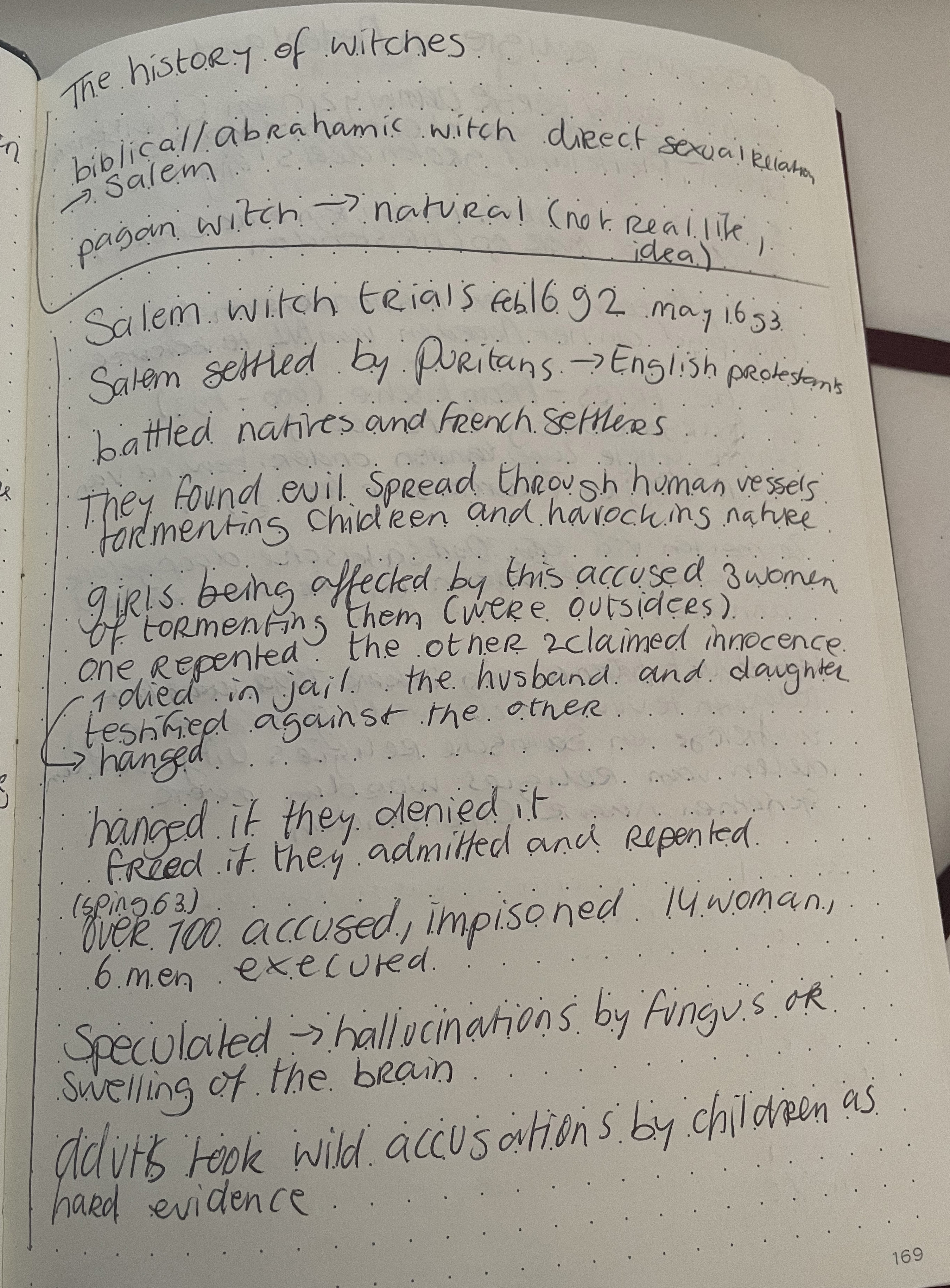
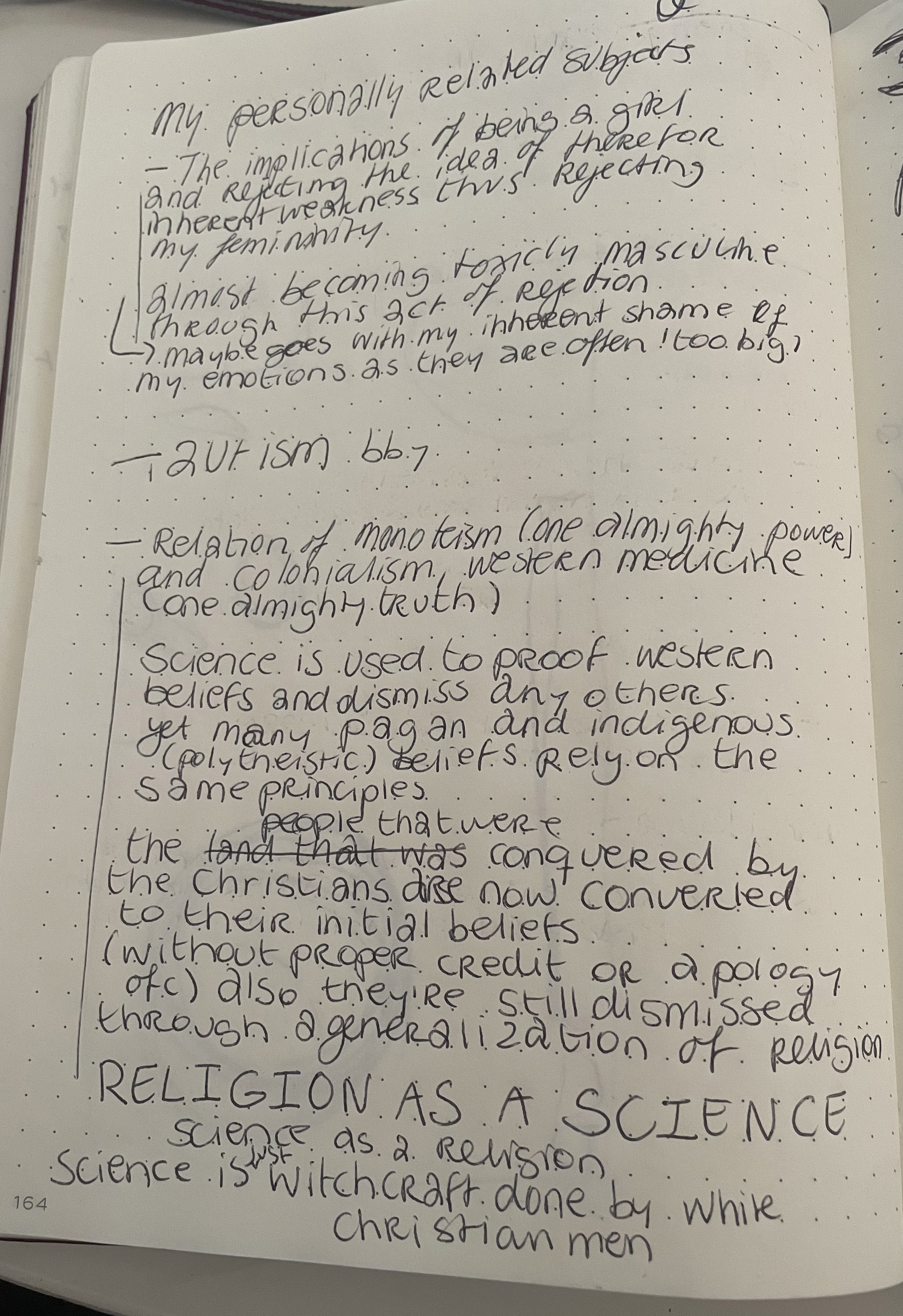
Hotglue doesn't allow me to embed the videos. This is a link to a Salemwitch trial video I watched:
https://youtu.be/NVd8kuufBhM?si=OXdW3UbvTOWzympl
On modern Paganism:
https://youtu.be/r-ho5EWz4O0?si=GhRiPRmchsUh0yZ6
Narrowing my research
As someone who’s seen the term Pagan go around not knowing it was a word for many beliefs I got interested in which beliefs existed that were put down by this term. I did a general research on the rise of Christianity but as there are so many beliefs that it conquered I felt the need to narrow it down.
I chose the area I’ve grown up in, the Netherlands. I chose this because although I am Natively Dutch I have never felt that this was something to be proud of. My association with people who feel pride for their Dutch heritage is people who relate this pride to Stroopwafels and bittergarnituur but also Football, Formula1 and worse things such as the monarchy, the VOC and with that a superiority to those of a another origin. Whenever I have a contact to someone proudly Dutch it is often because they’re scared our country is going to become too diverse and they want to remain in a Netherlands that became rich of the spice trade (and over the back of others) a Netherlands that’s superior for its knowledge in building dams and bridges.
Often when I speak with others about their cultural identity especially those whose country of origin faces discrimination or is going through hardships due to corrupt governing I find very different things are what makes them proud of their origin.
I can understand that this difference might come from a need to preserve their culture as it might be in danger of being erased but often I find them talking about their music, their native way of agriculture, their traditions , social norms and general beliefs. The thing they’re most proud of seems to be more linked to emotions and traditions built on what they think is the socially right thing to do.
Examples can be traditional recipes passed down through generations, practices they have to keep every member of society engaged or music describing their history and hardships.
These conversations have made me want to be able to connect to my heritage in that same way. Not built on triumph and winning but rather on connection to others and the land.
I remember when reading about both Greek and Norse mythologies that I felt more connected to the Norse myths purely because they felt written (or told) by people living in a similar climate as I do. Now knowing that both of the religions also fell under Pagan beliefs I wanted to know what specific beliefs were followed in the area that has now become the Netherlands.
Frysian and Sax beliefs
Not a lot of information about this is preserved as many people at these times were illiterate and did not write anything down. This is why the area I’m discussing is a bit broader and what is now known as the Benelux (Netherlands, Belgium and Luxembourg). The two beliefs followed here were the Frysian belief and the Sax belief.
The Sax beliefs have a bit more information about them and stem from the same beliefs as the Norse myths do. Due to the large area these stories were spread through and them being told mostly orally they were regionally different. They involved sacrifices of deer and pottery (possibly containing food) into bogs and lakes. It was a nature belief.
The Frysian religion sadly has no information left except for a paper written by Christians describing which rituals of their religion are from then on no longer permitted. This paper tells of for example no longer being allowed to make sacrifices in the name of Wodan and Donar (also known in the wider Germanic beliefs) or cremating the remains of loved ones for their burial rituals.
Both of these beliefs fall under the Germanic myths which then fall under the Indo-European beliefs.
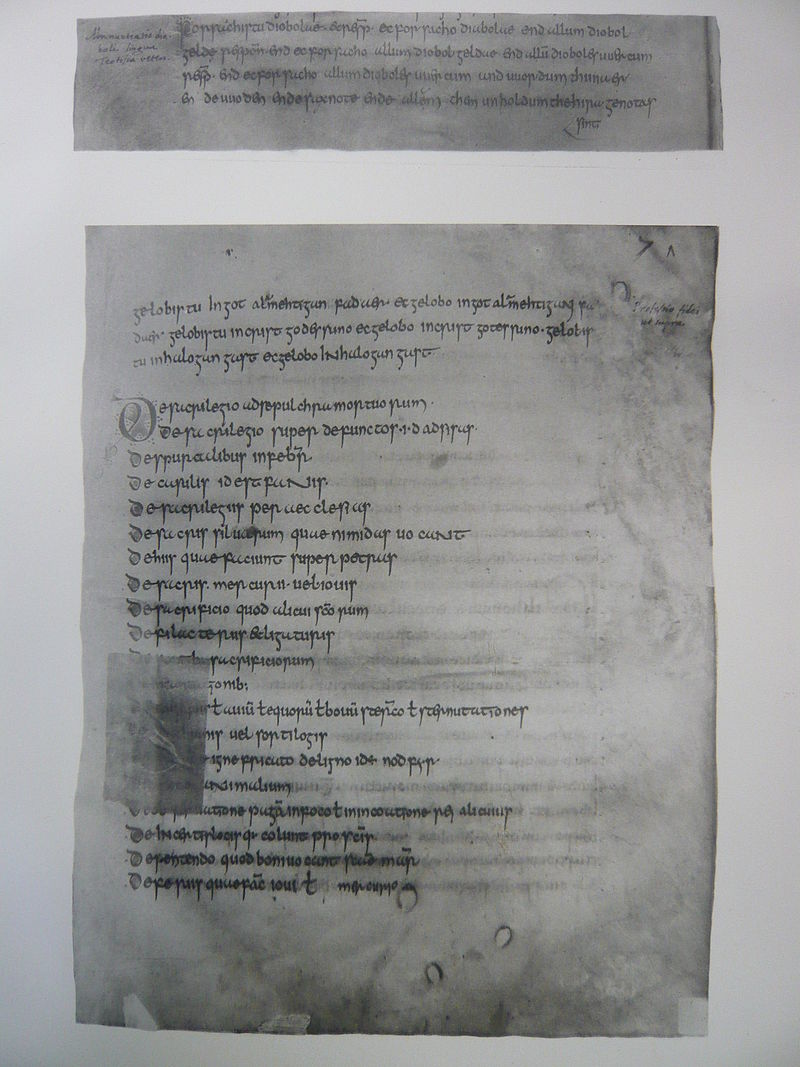
The list of practises prohibited. They translate to:
De sacrilegio ad sepulchra mortuorum. – "Over heiligschennis bij de graven van doden"
De sacrilegio super defunctos id est dadsisas. – "Over heiligschennis boven de doden, het doodsmaal"
De spurcalibus in Februario. – "Over banketten in februari"
De casulis id est fanis. – "Over kleine gebouwen, dat wil zeggen schrijnen"
De sacrilegiis per aecclesias. – "Over heiligschennis aan kerken"
De sacris siluarum quae nimidas vocant. – "Over boomheiligdommen, die ze nimida's noemen"
De hiis quae faciunt super petras. – "Over de dingen die ze doen boven bepaalde stenen"
De sacris Mercurii, vel Iovis. – "Over offers aan Mercurius (Wodan) of Jupiter (Donar)"
De sacrificio quod fit alicui sanctorum. – "Over de offerdienst voor een of andere heilige"
De filacteriis et ligaturis. – "Over amuletten en bindsels"
De fontibus sacrificiorum. – "Over offeren aan bronnen"
De incantationibus. – "Over bezweringen" (Galdr)
De auguriis vel avium vel equorum vel bovum stercora vel sternutationes. – "Over de voorspellingen uit mest van vogels, paarden of runderen en niezen" (Spá)
De divinis vel sortilogis. – "Over toekomstvoorspellingen en het werpen van het lot“
De igne fricato de ligno id est nodfyr. – "Over een vuur gemaakt van geraspt hout, wat heet nodfyr"
De cerebro animalium. - "Over het dierlijke brein"
De observatione pagana in foco, vel in inchoatione rei alicuius. - "Over heidense waarneming in de pan, of in het begin van elk ding"
De incertis locis que colunt pro sacris. "Over plaatsen op ongewisse plek, die zij als heiligdom vereren" (nemetons)
De petendo quod boni vocant sanctae Mariae. "Over de aanroep van de goedgezinde, die als Heilige Maria wordt gezien"
De feriis quae faciunt Jovi vel Mercurio. "Over feesten die zij voor Jupiter of Mercurius houden"
De lunae defectione, quod dicunt Vinceluna. - "Over de maansverduistering die ze Vinceluna noemen"
De tempestatibus et cornibus et cocleis. - "Over stormen, de hoorns van stieren, en slakken"
De sulcis circa villas. - "Over groeven rond boerderijen"
De pagano cursu quem yrias nominant, scissis pannis vel calciamentis. - "Over de heidense renloop die ze Yria noemen, met kleding en schoenen"
De eo, quod sibi sanctos fingunt quoslibet mortuos. - "Over wat ze zelf omschrijven als een heilige dood"
De simulacro de consparsa farina. - "Over het beeld van verspreide granen" (graanpoppen)
De simulacris de pannis factis. - "Over beelden gemaakt van doeken"
De simulacro quod per campos portant. - "Over het beeld dat ze over de velden dragen"
De ligneis pedibus vel manibus pagano ritu. - "Over houten voeten en handen naar de heidense rite"
De eo, quod credunt, quia femine lunam comendet, quod possint corda hominum tollere juxta paganos. - "Over dat, waarom de vrouwen de maan vertrouwen, wat de harten van mensen kan verheffen bij de heidenen" (Seiðr)
Christian belief
I’ve also looked into the way that these beliefs were eradicated from this area and then got interested in the origins of the Christian religion. As when this religion was first founded the Roman belief was most prominent.
In the end I found that the reason I wanted to find more information was because it felt unfair that these religions were forced out of existence. People unwilling to convert were waged wars against and executed. People that gave in were made to sign contracts to prove they no longer followed their own beliefs and had converted to Christianity.
Having the vaguer knowledge about this has always made me feel resentment towards Christianity. Working together with the Monarchy or the state to uphold their power. But then I did find that in the Roman days the same has happened to Christians. Their beliefs were once prohibited, they too were executed for their beliefs.
A time line of conversion from Sax and Frysian beliefs to Christianity.
Another source I used:
https://www.britannica.com/topic/Germanic-religion-and-mythology/The-end-of-paganism
Also read part of:
Nederlandse religie geschiedenis, Joris van Eijnatten en Fred van Lieburg
For Frsyian, Sax and Christian religion
The conclusion and my take on it
This led me the piece I made. during the research I also learned more about the holy trinity within Christianity and how this Triad can be found in many other religions. Within Christianity it exists of The father, son and the Holy spirit. and in this case I used them to represent the son as the oppressed, the father as the oppressor and protector and the holy spirit as this need to belief in something without proof.
At all these times there was an oppressed group due to their beliefs, that once they became more widely accepted started oppressing people with another belief. Surely also because they saw their religion as true but also as a way to reclaim a power they’d lost or never had and be sure to uphold it. Using the idea that you’ll only truly believe once you’ve ‘seen the light’ and dare to give yourself to the belief as a way to dispute non-believers. This upholding of power I feel as a way of healing their inner oppressed. They are safe now and need the power they have to keep it that way. Until eventually another group comes along that’s been belittled too much by them and feels the need to do the same thing.
Creating a place where the objective is winning. A game of power over another to feel validated and safe. A pattern not only seen within this context but also when looking at wars waged now and laws put in place to oppress the often already marginalized. And honestly looking back at my starting point something I also feel when being put down for my femininity
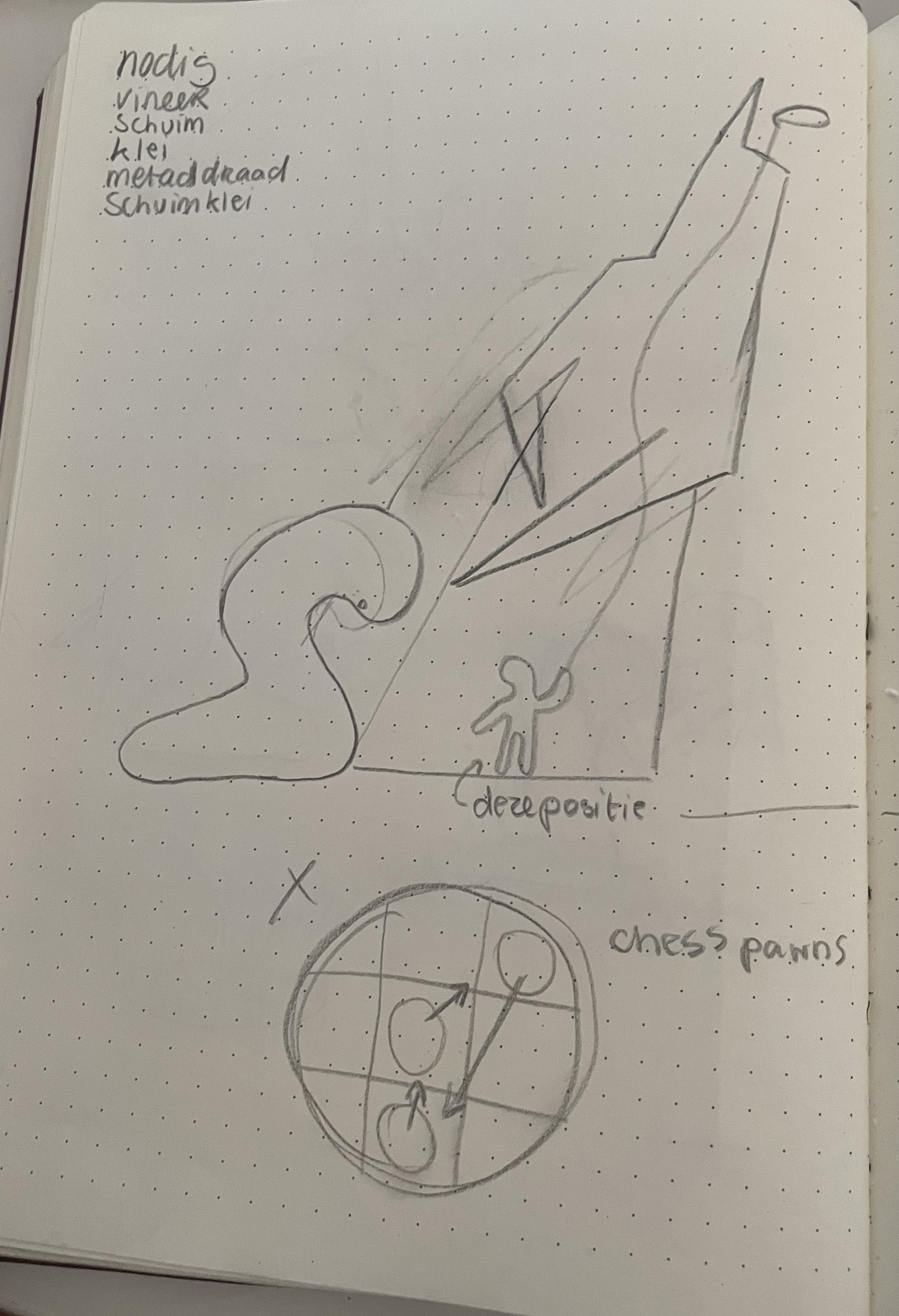
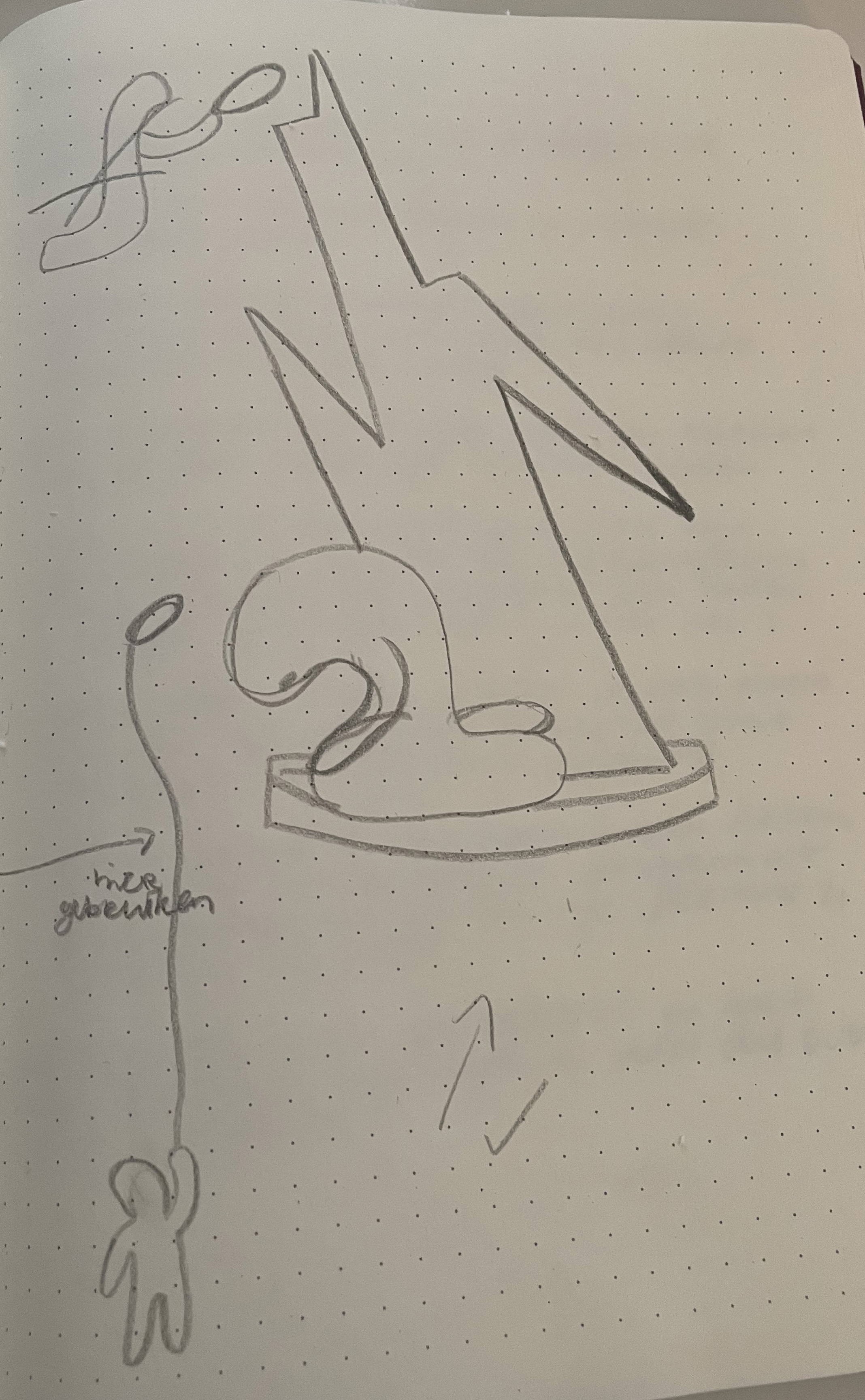
First sketches. Depicting a mighty figure, someone bowing down to them and the holy spirit that validates their power.
During the process the shape of the pawns changed to create an easier to understand depiction of the oppressor as a king pawn. I used a mixture of airdry clay and foam clay. The material was chosen because I had prior experience with working on it so I could be more sure it was made within the time frame.
The chessboard is made of a base of foam that is painted black. I used balsa wood for the top to represent a classic chessboard.
Final piece. All the pawns are in turn degrading the other to reclaim themselves from the degradation done to them by others
The name plaque's read:
- The father, son and the Holy spirit (Christianity)
- The highest god, the nature god and the soul god (Sax religion)
- Jupiter, Mars and Quirinis (Roman mythology)
They are triades found in these three religions.
The Kingpawn is pointing towards the ones they opress whilst holding it's hand on the back of the part of itself that was once oppressed, as a sign that it's nurturing it. The little figure is the holyspirit giving the king a halo to signify it's holyness.
For the base of the figure I used foam, for the halo some metal wire. Except for the plaque and metal halo everything is painted with a black acrylic paint and then given a coat of polish to give the appearance of a chesspawn.